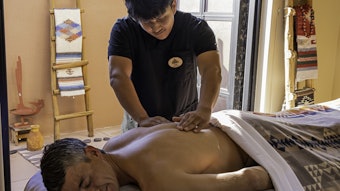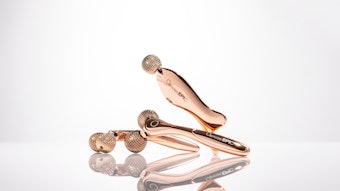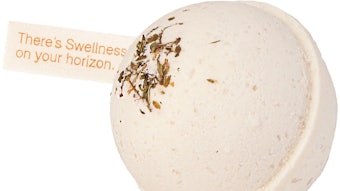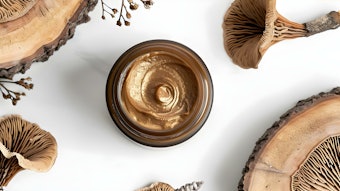The term “hormonal vulnerability” refers to the situation in which a woman’s body—and mind—react uncomfortably to her own hormones. Hormone problems tend to be subtle and, thus, frequently are misinterpreted as psychological when lab test results come back normal. The reason for this abnormality is not due to the hormones themselves, but how the individual woman’s body responds to them. Also, many females who consult doctors about symptoms due to hormonal vulnerability find that their concerns are not taken seriously, and they often are offered ineffective treatment options. As a result, many of them turn to nonmedical or alternative treatments for relief.
Hormonal conditions have dramatic effects on the skin and hair, in addition to impacting both physical and mental well-being. Indeed, a majority of clients who seek help from spa professionals do so because of hormonal vulnerability, although it is not usually recognized as the underlying cause. Professionals in these fields often find themselves assuming the role of an unofficial counselor or therapist regarding common female medical problems. Understanding prevalent female hormone problems can prove valuable for spa professionals. Although I do not suggest that anyone without medical training should presume to give specific medical advice to clients, I do believe that estheticians and other spa professionals can meet their clients’ needs better if they are informed about the problems that can result from hormonal vulnerability.
Hormonal effects
According to the author’s research, as many as 80% of women suddenly find that the hormones they previously were able to ignore have become a disruptive presence in their lives. This occurs most commonly between the mid-30s and mid-50s, although the problem can begin as early as the teen years and extend into the 60s. A number of hormonal difficulties tend to manifest concurrently so that, unfortunately, women who experience one symptom are likely to have several.
The many hormones in a woman’s body produce different effects, and hormonal vulnerability can influence four areas of life: appearance, physical well-being, emotions and sexuality.
Appearance. Many women have skin and hair that are overly sensitive to the effects of testosterone on the sebaceous glands and hair follicles. Among these vulnerable women, this hormone is the underlying cause of oily skin and acne, as well as hirsutism, or unwanted facial and body hair. Alopecia, or severe hair loss, before age 40 is most commonly due to a vulnerability to testosterone. When the onset is in the 40s and 50s, declining estrogen levels are the most frequent cause of thinning hair. Stress or poor nutrition rarely are to blame.
Physical well-being. Hormone shifts can cause migraines, cramps, muscle and joint aches, loss of energy and overall body discomfort.
Emotions. Many women notice that their emotions get out of control in the days before the start of their period. They may cry often or become increasingly angry at those they love most. This loss of control is distressing enough when it lasts only a day or two. But, for some, these mood swings may persist for much longer.
Sexuality. Everyone knows that hormones make sex possible. Unfortunately, they also can make it impossible for some. Without adequate estrogen, vaginal penetration can be painful. For some women, testosterone also is necessary to achieve sexual thoughts and physical pleasure.
The medical community
Hormonal vulnerability is not considered often by the medical community. Although things have improved, there is still a tendency for doctors to ignore complaints for which they cannot find a physical diagnosis, especially with female patients. All too often, a woman consults a physician and, after a few tests, is told, “All your results are normal; there’s nothing wrong with you.” Even though many doctors never have heard of the term “hormonal vulnerability,” women know immediately what it means because they have experienced these disruptions in their own lives.
For a woman who suffers from mood swings, adult acne or any other related symptoms, it is frustrating to seek help, only to have her complaints dismissed. One result is that women are looking for assistance outside the conventional health care system. Many of the services provided by spas fit into this category. The personal care and beauty industries do not minimize women’s concerns as trivial. Instead, they have developed nonmedical remedies that play an important role in soothing the effects of wayward hormones.
Women’s skin
Acne, oily skin and hair problems are always hormonal, resulting from vulnerability to testosterone. When skin is overly sensitive to testosterone, even a tiny amount will increase production in the oil glands. Similarly, the excess facial or body hair removed by electrolysis or lasers is always caused by testosterone stimulating hair follicles.
Many doctors mistakenly conclude that when a patient’s testosterone levels are normal, the cause of the person’s symptoms is not hormonal. However, if a woman’s skin is extra sensitive to testosterone, even normal levels can cause acne, hirsutism and alopecia. Beyond acne and seborrhea, testosterone accelerates skin aging in women. Consequently, anti-aging skin care is necessary to counteract these effects.
Hair
Of all the symptoms produced by hormonal vulnerability, thinning scalp hair is perhaps the most distressing. Some affected women virtually withdraw from life because of it. Dermatologists and even endocrinologists usually tell women that there is no remedy. However, this is not the case. Treatments that target the hormonal cause can be effective in the majority of cases of alopecia.
Physical well-being
Most women experience some physical discomfort during the last week of their cycle and often for the first day or two of menstruation, as well. Symptoms can include not only cramps but also migraines, muscle aches and pains, mood swings, bloating and abdominal discomfort. It is obvious that these are triggered by hormones because they occur in the part of the cycle in which estrogen and progesterone—the two main female hormones—change too rapidly for the body to keep up. Although menstruation usually brings relief, hormonally vulnerable women still must endure several miserable days each month. To make matters even worse, complexion problems tend to be at their worst during this time.
Studies have shown convincingly that massage is extremely effective in reducing the symptoms of premenstrual syndrome (PMS). The week preceding the onset of their period may be a particularly important time for women to enjoy spa services. Physical discomfort—even barely noticeable mild but persistent pain—can contribute to depression. Because massage, sauna and other such treatments soothe bodily discomforts, they can be extremely helpful for women who experience hormonal swings during their cycles. Spa professionals who provide these services should be aware of the relief they can bring and also recognize the need for sensitivity when dealing with clients who are at their rawest.
Emotions
The brain’s chemistry exerts profound effects on the emotions. Studies in animals have established that estrogen and progesterone directly affect nerve cell function in the brain. Women experience this when their feelings tend to change during the menstrual cycle. Typically, the first two weeks are fairly calm. Problems often occur after ovulation, when progesterone rises, and about 10 days later, when it falls abruptly. Although it originally was believed that progesterone was good for PMS, more recent research demonstrates that, on the contrary, it often triggers mood swings. During the week preceding menstruation, moods tend to fluctuate, and frustration or minor annoyances tend to produce outbursts of temper, followed by remorse.
Although these emotional changes are mainly due to changes in brain chemistry, the physical discomforts of this phase contribute as well. It’s hard to be cheerful when you are in pain.
Sexuality
When prescribed properly, testosterone can help many women to recapture the pleasure of sexual intimacy. On the other hand, the adverse effects of testosterone on skin and hair, such as hair loss, are profoundly depressing to affected women. There is a current tendency to prescribe testosterone to women in order to rev up a dwindling sex drive. Unfortunately, few doctors who prescribe it have adequate knowledge of the effects of this powerful hormone on women’s bodies. In most of my professional observations, the doses are grossly excessive. In my practice, I frequently see women who have been prescribed testosterone creams by other doctors that result in them having blood levels of the hormone that are in the male range. The use of testosterone needs to be in appropriate doses for the female body.
Hope for hormonal vulnerability
Women with hormonal vulnerability need three kinds of help. First, they require validation that their symptoms are real and are experienced often by other women, and not simply in their heads. Second, they need accurate information as to what is causing the disturbing changes in their appearance, bodily comfort, emotions and sexuality. Finally, they seek specific information on how hormonal vulnerability can be relieved. A variety of steps can be taken to alleviate symptoms, including implementing changes in lifestyle, nutrition and spiritual practices, as well as taking medication. Women who are hormonally vulnerable should learn as much about the condition as possible in order to seek help from medical professionals. It is critical to remain persistent about finding treatments that work. Spas also can offer various services that make a noticeable difference.
General References
- Oleson T and Flocco W, Randomized controlled study of premenstrual symptoms treated with ear, hand, and foot reflexology, Obstetrics & Gynecology 82 (6), 906-11 (December1993)
- Redmond G, The Hormonally Vulnerable Woman, ReganBooks/ HarperCollins (2005)
- Smith MJ, Schmidt PJ, Su TP and Rubinow DR, Gonadotropin- releasing hormone-stimulated donadotropin levels in women with premenstrual dysphoria, Gynecol Endocrinol 19 (6), 335-43 (December 2004)










